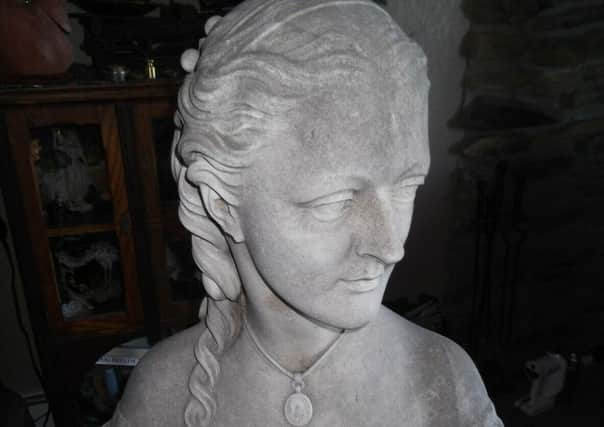Mystery bust by top Scottish sculptress up for US auction


The sculpture, which is believed to have stood beside a grave in the American state, is marked as having been created by Hill in 1867 – but it is not known whether the family had connections to the artist, who at the time was based in Scotland.
Hill, who was born in Dunfermline in 1821, is one of very few female sculptors of her time to have had public commissions – including the statue of David Livingstone in Princes Street Gardens and of Robert Burns in Dumfries. She produced only 60 works during her lifetime.
Advertisement
Hide AdAdvertisement
Hide AdThe alabaster bust of a woman wearing a locket was found at an auction in the Wyoming capital of Cheyenne as part of the estate of Ned Murray, a local property businessman, and his wife Barbara.
A spokeswoman for antique dealer Forgotten Treasures, based in Laramie, said: “We came upon this piece by chance from a Cheyenne, Wyoming, auction. Incredibly, we believe this to be an original sculpture by Amelia Robertson Hill from Edinburgh – a famous early Scottish female sculptor.
“We believe this piece was maybe commissioned by the family, although it is unknown if the family had Scottish ties. The piece is marked Amelia R. Hill 1867 Edinburgh, so perhaps it was shipped [to the US].”
Hill, whose siblings Joseph Noel Paton and Waller Hugh Paton were also both artists, launched her career at the age of 40 with the exhibition of two busts at the Royal Scottish Academy and went on to show more than 60 sculptures in Edinburgh and Glasgow between 1860 and 1882. In addition to contributing three figures to the Scott Monument on Princes Street in Edinburgh, she also created a statue of newspaper editor Hugh Miller, which is on show in the National Museum of Scotland.
When Hill, who was married to painter and photographic pioneer, David Octavius Hill, was excluded from RSA membership in 1877, she helped found the Albert Institute of Fine Arts in Edinburgh’s Shandwick Place. This alternative art society welcomed aspiring artists regardless of gender.
The bust is up for sale for £2,000.